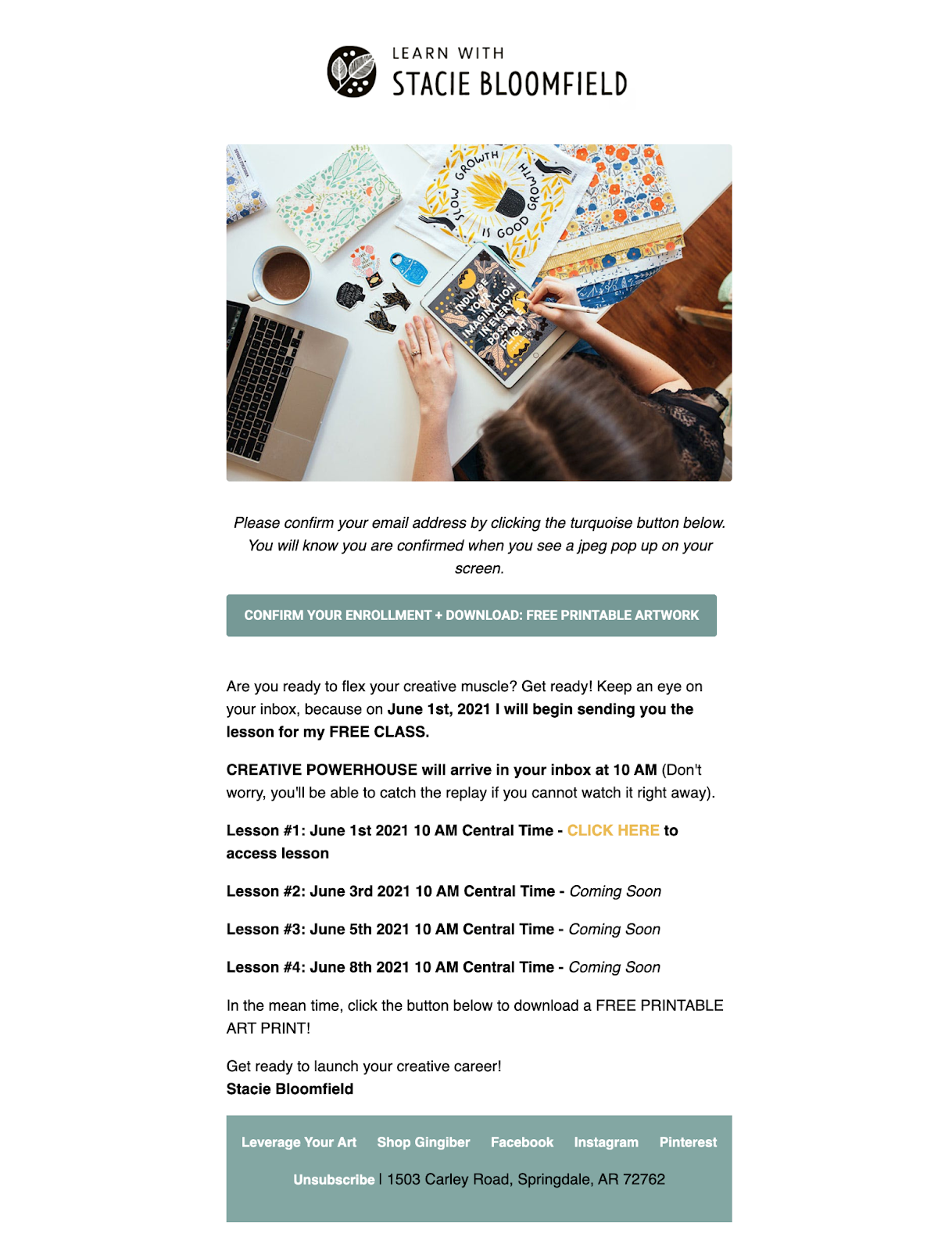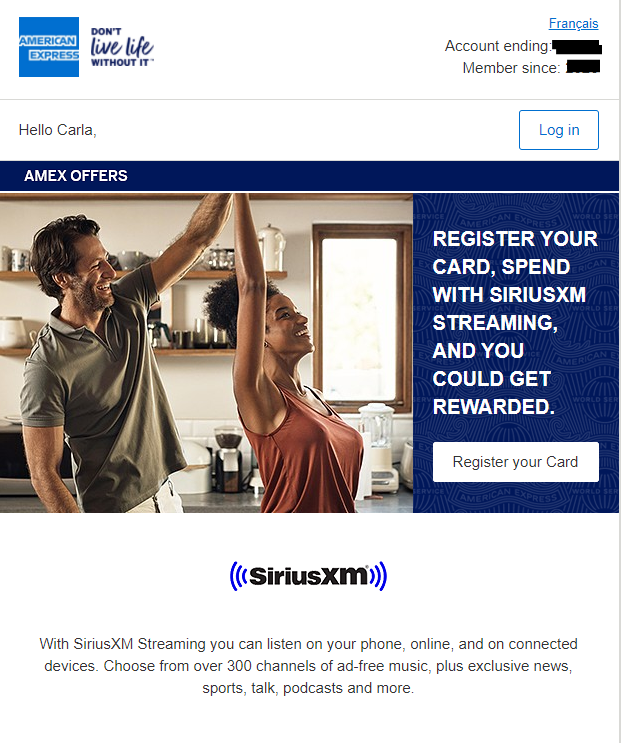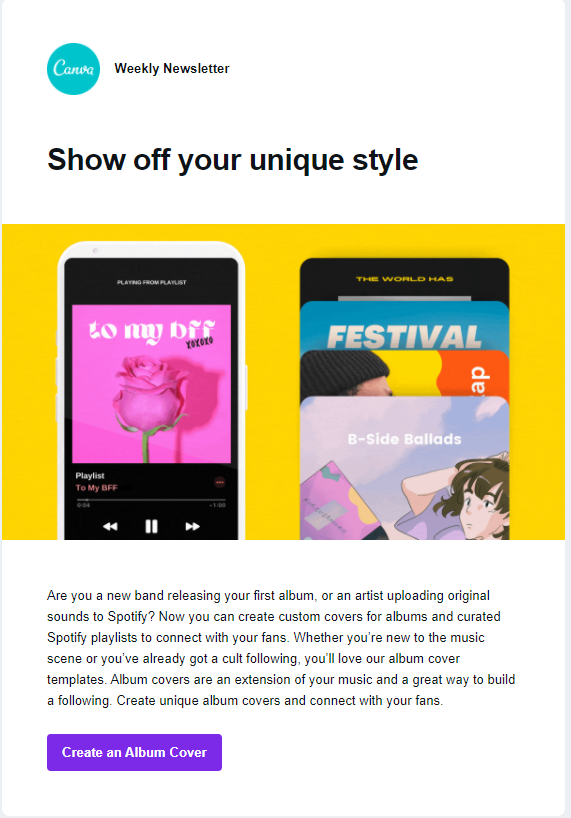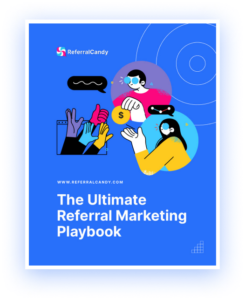Newsletters have been on the scene electronically for a number of years now. We’ve seen marketers test different tactics to capture their audiences with varying levels of success.
Marketers in many industries favor email marketing for good reason. According to a 2019 Litmus report, email marketing produces the highest returns, averaging $42 per dollar spent.
Even with a modest outreach budget, investing in email marketing could propel your company forward. So this begs the question, what makes a newsletter any good?
If you’d like to learn how to create a newsletter for your small business, capture your audience and reach stellar returns, keep reading.
Benefits of Using Newsletters in Your Email Marketing
To begin, it’s a good idea to know why you’re sending a newsletter to your customers before you start blasting emails to your entire list.
Sending newsletters is a low-cost marketing strategy to build credibility, grow your subscriber list, retain your existing customers, and even bring back old leads.
Newsletters have a bad rap, but according to a survey by MarketingSherpa, 91% of American consumers have a positive attitude towards promotional emails. Moreover, 60% of the group would like to get these updates at least once per week.
Aside from the positive statistics, here are some of the main benefits you can gauge from sending newsletters as part of your email marketing.
-
-
- Positive results even with a simple Gmail app. Gmail offers an intuitive interface and integration with Google Docs. This is beneficial because you can browse their Template Gallery and quickly draft a customized newsletter. You can also get a Gmail desktop app to merge and manage all your inboxes, draft and schedule outgoing mail, and clear out any junk with ease.
-
- Build credibility. Providing insightful and actionable data in your small business newsletter helps gain credibility and build rapport with customers. Other credibility boosters include landing on a trusted senders list and using meaningful subject lines.
-
- Attract the right people. Email marketing enables small business owners to get in touch with people who are actually interested in hearing from them. Depending on the staff and budget available, this type of advanced targeting can improve efficiency with higher returns in less time.
-
- Open channels of communication. Emails can be used to collect feedback from users and start a genuine conversation. In addition to sharing the latest news and updates, you can send out occasional surveys or polls to keep customers engaged.
- Improve brand recognition. Newsletters are an excellent tool to promote your brand symbols. Adding your logo, motto, and brand colors to business emails and content will ensure people recognize your brand. When you provide consistent value, customers will have positive associations with your brand.
- Strengthen customer retention. Newsletters and updates can help refresh your sales and keep customers engaged. Popping up on their laptop or mobile on a regular basis will not only keep your brand top of mind. It may also sway them to make a purchase. You can also diversify your customer retention strategy with loyalty programs, discounts, and competitions.
-
How to Create a Newsletter for Your Small Business
Having a clear strategy for your email marketing efforts will help generate the best results. Aligning your goals with the goals of your audience can help your campaigns and your bottom line.
Here are some things to consider, based on your marketing goals, who your customers are, how often they like to receive updates and the topics they are interested in.
1. Campaign Goals
It’s hard to get anywhere if you don’t know where you are going. Consider your business objectives before launching your email marketing campaign. Do you need more customers, or are you looking to increase average customer spend? Are you at the early stages and need to build trust to convert prospects into loyal brand supporters?
Sending out bulk offers and trying to upsell prospects before they know and trust you will alienate them. Plus, you would be pouring money into an unproductive campaign with little to no return.
2. Target Audience
Customer pains, fears, and desires should be at the forefront of your mind when you’re drafting your newsletters. Knowing your audience’s demographics and behavior patterns is a must. Based on the information you have, you will be better able to spark interest and keep customers around for the long haul.
3. Segmentation Criteria
There are many ways you can work on segmenting your mailing list, and the opt-in could be the first opportunity for it. When and where somebody subscribed to your newsletter can indicate what they’re interested in. Is it a particular topic, product, or offer that influenced their decision?
You can also create separate checkboxes for subscribing to your newsletter and special offers. Then, you can monitor your email open rates, analyze what content gets the most clicks, as well as what drives conversions.
Finally, asking your audience what they would like to see next is the most straightforward way to segment your list. Creating a simple poll or survey and allowing subscribers to check off specific topics will create a better user experience. In addition, it will help focus your efforts and strategies when it comes to sharing news, educational content, and information about your services.
4. Mailing List Hygiene
Mailing list hygiene is also worth considering. If someone hasn’t opened any emails for a while, you may want to try a different approach or take them off your list.
5. Personalised Content
Once you have your segments in place, you can craft more personalized content with compelling subject lines, appropriate visuals, and desired insights. That way, you can reap the benefits of automation while still delivering a highly personalized and relevant message to each subscriber.
6. Content Plan and Schedule
Having a content calendar will increase your campaign efficiency. When you decide on the topics and frequency of outreach in advance, you can create content and improve your offer.
Investing in automation will also ensure your campaign is on track while you are focusing on running the business. Try using a task management software to streamline you team’s workflow to ensure productivity and efficiency.
What are the best tools for building a newsletter?
Newsletter creation tools will streamline your efforts and help you craft compelling material in no time. Automation, list building, segmentation, reports, and ready-to-use templates are just some features you can get with tools such as Constant Contact.
You can also brand your newsletters, add visuals, and customize templates to reach your campaign goals.
Inspiration and Newsletter Ideas for Small Business
Before creating your newsletter, check out some of the high-performing newsletter examples for inspiration.
1. Canva
Canva always provides subscribers with bright and simple. This example also has a brilliant call to action in the form of a button. Click it and you’ll be transferred to the design tool.
|
Pro tip: When basics are covered, make sure to deliver on your promise. Relevant and valuable content with occasional promotional offers is a combo for brand growth. This is where you should build a clear content creation process. Research what subjects are most interesting for prospects to create high-quality content that both educates and entertains. Being consistent will require planning and scheduling content, but it will be worth the effort. |
2. Casper Labs
Casper Labs effectively uses graphics to tell a story and reveal their solution to a problem. The non-aggressive CTA “Learn More” helps drive engagement without selling pressure.

|
Pro tip: Scheduling can do wonders for conversions as 21% of emails get read within the first hour, and about 41% are open within three hours. Deploying emails on certain days and peak times helps convert subscribers into buyers. Especially considering that email marketing is almost five times more successful in converting leads into customers than the “Buy” button on social media. |
3. Cook Smarts
Combining helpful tips with attractive visuals, the Cook Smarts newsletter is the perfect recipe for customer loyalty.

|
Pro tip: Email subjects can mean the difference between attracting a potential buyer and being stopped by the spam filter. Avoid sensationalist titles. Instead, aim to sound informative and engaging. |
4. Stacie Bloomfield
Newsletters don’t need to have complicated designs to be effective. A simple layout with just one CTA may be the way to go.

|
Pro tip: Using double opt-in reduces the risk of your newsletters landing in Spam. It also ensures that subscribers actually want to receive your content and didn’t share their email on a whim. |
5. Sendinblue
If you have a lot to tell, you can create a skimmable newsletter with multiple sections, striking a balance between product features, news, and CTAs. Intelligent use of paragraphs, lists, and white space can help a packed newsletter remain a top performer.

|
Pro tip: When you provide consistent value, customers will have positive associations with your brand. Your style will shine through, and supporters will look forward to seeing your messages in their inbox and beyond. Your brand will also start to symbolize and embody the values your business is built upon. And the stronger the value association, the more loyal your customer base will become. |
6. PlayStation
Weekly updates on new releases, content, and features are one way to retain customers. PlayStation takes it a step further to gamify the experience and encourage users to keep playing. They include the subscriber’s console usage at the top and an opportunity for users to rate their newsletter at the bottom.

7. The Nature Conservancy
Nonprofits such as Nature Conservancy can utilize monthly newsletters to promote content around their mission and encourage subscribers to donate and follow them on social media.

|
Pro tip: Including your social media channels, website, and contact information in your email signature can also prompt engagement and steer more customers your way. Moreover, delivering content straight to your customers’ inbox is the simplest way to stay in touch whether the business is booming or slowing down. |
8. American Express feat. SiriusXM
Newsletters can also showcase special offers that you conduct along with affiliates. Like in this case, Amex is offering a reward for using their card on a partner website.

|
Pro tip: Consider separate opt-ins for the updates and offers for more advanced targeting. It can seem counterintuitive and trigger the fear of missing out. However, trying to sell to someone who is not looking to buy can trigger them to unsubscribe and never look back. If and when they decide to buy, they will remember you. After all, they will already have a positive association with the brand, thanks to the exquisite newsletters you have been sending to their inbox. |
9. Litmus
Interesting content organized into blocks and separated with color is what makes Litmus newsletter memorable. You can also try incorporating specific CTAs that are more appropriate for the content than generic ones.

10. Wishpond
This last example from Wishpond shows how to announce winners. The company certainly knows its way around designing the perfect newsletter. Visually appealing yet straightforward design combined with copy that cuts straight to the point is often the way to go.

|
Pro tip: Holidays and off-season periods can be the perfect time to launch giveaways. Besides building excitement, giveaways and contests can help spread the word and bring new prospects to your small business. Existing customers will be reinvigorated and may be prompted to spend more soon. After all, if someone has already bought from you before, they are more likely to buy again. Re-engaging customers and upselling can quickly boost sales. This is especially true for small businesses that provide exciting, targeted, and relevant content in line with their buyers’ needs. For example, many retailers report that their sales and bookings soar immediately after sending out a newsletter update. |
Conclusion
Email marketing is the most effective marketing strategy for small businesses. Newsletters and promotional emails have five times higher conversions than social media campaigns and a 42:1 ROI.
Using tools such as Mailbird and Constant Contact to automate parts of the process can help owners and marketers work faster and smarter.
And finding newsletter ideas can be as simple as browsing examples and templates for inspiration.
If you enjoyed this article, you might like these:
-
9 Examples of Customer Appreciation Strategies for Ecommerce Brands
- The Evolution of Loyalty Programs: 17 Examples of Keeping Customers Coming Back
Check out ReferralCandy and InfluencerCandy.
This is a guestpost from our friends at Mailbird, written by Iryna Poliakova.



